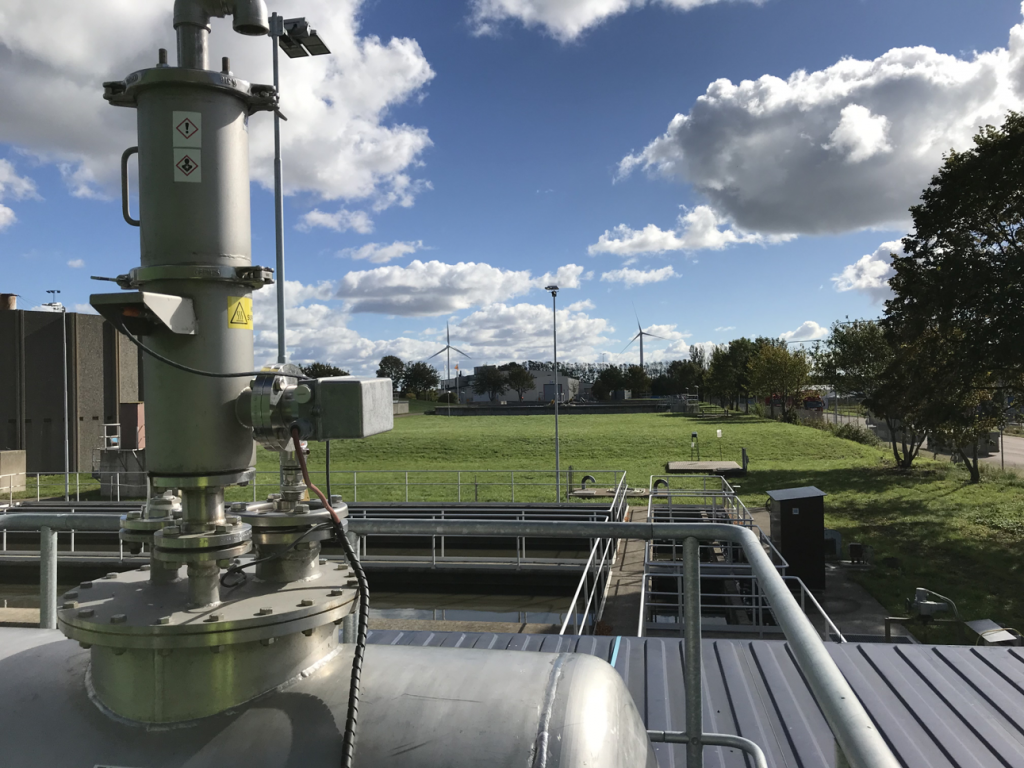WP2: Ozonation of wastewater for removal of micropollutants
Ozonation is already in use for removal of micropollutants from municipal wastewater. This work package is dedicated on improving ozonation processes from different perspectives.
 Ozonation is already in use for removal of micropollutants from municipal wastewater. This work package is dedicated on improving ozonation processes from different perspectives. Mechanisms behind formation of oxidation products will be studied and coupled to advanced treatment in practice.
Ozonation is already in use for removal of micropollutants from municipal wastewater. This work package is dedicated on improving ozonation processes from different perspectives. Mechanisms behind formation of oxidation products will be studied and coupled to advanced treatment in practice.
Dosing and reaction time are important factors in understanding design and ozonation efficiency as well as formation of various transformation products. Post-treatment, for potential degradation of transformation products, in Moving Bed Biofilm Reactors (MBBRs) is an essential
part of the work.
Key results from WP2
Ozone have been used for treatment of drinking water for decades. In recent years ozonation have been successfully applied also at municipal wastewater treatment plants for removal of organic micropollutants such as pharmaceutical residues. In reality removal doesn’t imply complete degradation (mineralization) but rather transformation into new compounds, so called transformation products.
Understanding formation and removal of transformation products is one key to successful implementation of ozonation technology since toxicity might be related to transformation products and not only to the original micropollutants.
In this work package we have studied reaction pathways to understand the formation and potential removal of various transformation products to get a better understanding on how to operate an ozonation process and what to expect in terms of removal of different substances. Knowledge on transformation products is also important in order to find suitable post-treatments to complement ozonation plants.
We have also studied several basic design parameters in a pilot plant at the municipal wastewater treatment plant in Landskrona in Sweden showing that results from ozonation can be predicted and that space can be saved in design of future installations. Based on results from the project we have taken some important steps towards providing effective ozonation plants in the Baltic Sea region.
Publications
Ekblad, M., Falås, P., El-taliawy, H., Nilsson, F., Bester, K., Hagman, M. and Cimbritz, M. 2019. Is dissolved COD a suitable design parameter for ozone oxidation of organic micropollutants in wastewater?, Science of the Total Environment, vol. 658, s. 449-456. https://doi.org/10.1016/j.scitotenv.2018.12.085
Edefell, E., Ekblad, M., Kharel, S., Hagman, M., Christensson, M., Falås, P., Cimbritz, M. and Bester, K. 2019. MBBRs for degradation of organic micropollutants and transformation products from ozonation., Abstract accepted for presentation at NORDIWA in Helsinki, September 2019.
Kharel, S., Stapf, M., Miehe, U., Ekblad, M., Cimbritz, M., Falås, P., Nilsson, J., Sehlén, R. and Bester, K. 2020. Formation and removal of transformation products during ozonation of wastewater. Science of the Total Environment, 2020, in press.
Tasks
- Optimization of the ozonation process
- Studies – in pilot and in laboratory – of removal rates considering variations in pH, TOC and iron
- Optimization of ozone dosing and ozone transfer into the water
- Determination of unknown transformation products (TP’s)
- Elucidation of formation and removal of formed TP’s
Contact information
Key person
Maja Ekblad, Sweden Water Research/Lund University
Other participants
Per Falås, Lund University
Mikael Scott, Primozone
Marinette Hagman, Sweden Water Research
Rubén Juárez, Sweden Water Research/Lund University
WP-leader
Michael Cimbritz, Lund University, michael.cimbritz@chemeng.lth.se
Project Coordinator
Prof. Kai Bester, kb@envs.au.dk Aarhus University, Dep. of Environ. Sci., Frederiksborgvej 399, DK-4000 Roskilde
